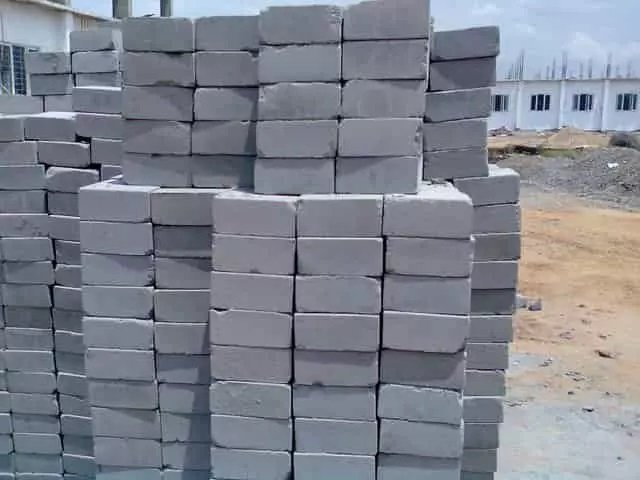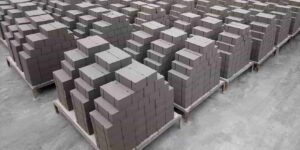Fly ash bricks have been in use for construction in India for over two decades now. They are an eco-friendly and cost-effective alternative to traditional clay bricks. However, despite their many advantages, fly ash bricks are still not as widely used as they should be in India. In this article, we will explore the reasons behind this and suggest ways to solve this issue.
Why people avoid using fly ash bricks in India?
Lack of awareness:
The primary reason why people avoid using fly ash bricks in India is the lack of awareness about their benefits. People are more familiar with traditional clay bricks and are hesitant to try something new. This lack of awareness is particularly prevalent in rural areas where the use of fly ash bricks is almost non-existent.
Perceived quality issues:
Another reason why people avoid using fly ash bricks is the perception that they are of lower quality than traditional clay bricks. This perception is not entirely baseless, as there have been instances of poor quality fly ash bricks being produced and used. However, it is important to note that the quality of fly ash bricks can be as good as, if not better than, traditional clay bricks if they are manufactured properly.
Lack of government incentives:
Despite the government’s efforts to promote the use of fly ash bricks, there is still a lack of incentives for builders and contractors to use them. The cost of production of fly ash bricks is lower than that of traditional clay bricks, but there are still some upfront costs involved in setting up a fly ash brick manufacturing unit. The government can encourage the use of fly ash bricks by providing tax incentives or subsidies for setting up manufacturing units.
Infrastructure challenges:
The use of fly ash bricks requires a different set of skills and techniques than those used in traditional clay brick construction. Many contractors and builders in India do not have the necessary skills or equipment to work with fly ash bricks. Additionally, there is a lack of infrastructure for the transportation and storage of fly ash, which can make it difficult for manufacturers to produce and distribute the bricks.
How to solve this issue?
Awareness campaigns:
The government and other organizations can launch awareness campaigns to educate people about the benefits of fly ash bricks. These campaigns can be targeted towards both urban and rural areas and should focus on the environmental, economic, and structural benefits of using fly ash bricks.
Quality control:
The government can set up quality control measures to ensure that only high-quality fly ash bricks are manufactured and used. This can include setting up testing facilities and standards for the manufacturing process. The government can also provide training to manufacturers and builders on how to produce and use fly ash bricks properly.
Incentives:
The government can provide incentives to builders and contractors to use fly ash bricks. This can include tax incentives, subsidies for setting up manufacturing units, or loans for purchasing equipment. These incentives can encourage more people to adopt fly ash bricks in their construction projects.
Infrastructure development:
The government can invest in the infrastructure needed for the transportation and storage of fly ash. This can include the construction of dedicated fly ash transportation systems and storage facilities. Additionally, the government can provide training to manufacturers and builders on how to transport and store fly ash properly.
Collaboration with industry:
The government can collaborate with the fly ash brick manufacturing industry to promote the use of fly ash bricks. This can include working together to improve quality control measures, providing training to manufacturers and builders, and launching joint awareness campaigns.
Conclusion:
Fly ash bricks are a sustainable and cost-effective alternative to traditional clay bricks. However, their adoption in India has been slow due to a lack of awareness, perceived quality issues, lack of government incentives, and infrastructure challenges. To solve this issue, the government and other organizations can launch awareness campaigns, set up quality control measures, provide incentives, invest in the necessary infrastructure, and collaborate with the industry to promote the use of fly ash bricks. By taking these steps, we can encourage more people in India to adopt fly ash bricks in their construction projects, leading to a more sustainable and eco-friendly construction industry.
In addition to the benefits mentioned above, fly ash bricks also have superior strength and durability compared to traditional clay bricks. They are also resistant to fire, pests, and moisture, making them ideal for use in areas with extreme weather conditions. Furthermore, the use of fly ash bricks can reduce the demand for clay, which is a non-renewable resource, and reduce the amount of waste generated by the construction industry.
In conclusion, the adoption of fly ash bricks in India has been slow due to several factors. However, by increasing awareness, improving quality control measures, providing incentives, investing in infrastructure, and collaborating with the industry, we can encourage more people to use fly ash bricks in their construction projects. This will lead to a more sustainable and eco-friendly construction industry in India, benefiting both the environment and the economy.




